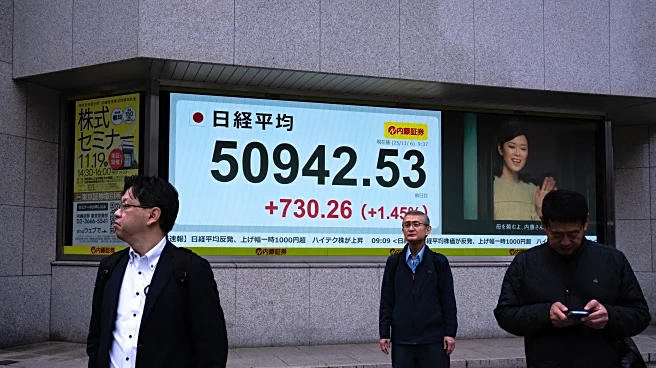What's Happening?
The U.S. dollar maintained its position above a 2018 low against major currencies on Friday, as traders awaited the release of U.S. jobs data. This data is expected to provide insights into the fiscal
stimulus required to support the economy impacted by the coronavirus pandemic. The dollar had rebounded from a nearly three-year low on Thursday, driven by rising U.S. yields that led to the unwinding of bearish bets on the currency. This resulted in traders taking profits against the euro. The dollar index, which measures the currency against a basket of others, dropped 7% in 2020 and saw a decline of up to 0.9% in the early days of the new year, influenced by expectations of U.S. fiscal stimulus. On Friday, the index was slightly up by 0.1%, hovering around the 90 mark, following its largest increase in over two months on Thursday. However, it remains on track for a weekly decline.
Why It's Important?
The dollar's performance is crucial as it impacts global trade and economic stability. A weaker dollar can make U.S. exports more competitive but may also increase the cost of imports, affecting inflation. The anticipation of fiscal stimulus under President-elect Joe Biden's administration, following the Democrats' Senate wins, is expected to fuel risk appetite, which could be negative for bonds and the dollar. Analysts suggest that the U.S. employment recovery may lag behind other countries, potentially delaying the Federal Reserve's tightening cycle, which could further weaken the dollar. This situation is significant for investors and policymakers as they navigate the economic recovery and fiscal strategies.
What's Next?
The upcoming U.S. non-farm payrolls data for December, expected to show a gain of 71,000 jobs, will be a key indicator of the economic recovery pace. This data will influence market expectations regarding fiscal stimulus and monetary policy adjustments. As the Democrats prepare to take control of the Senate, there is potential for increased government spending, which could impact the dollar's trajectory. Additionally, the political climate, including discussions of impeaching President Trump, may affect market stability and investor confidence.
Beyond the Headlines
The broader implications of the dollar's movement include potential shifts in international trade dynamics and investment flows. A sustained weaker dollar could lead to increased foreign investment in U.S. assets, while also affecting the competitiveness of U.S. companies abroad. The political developments in Washington, including the potential impeachment of President Trump, add a layer of uncertainty that could influence economic policy and market reactions.













